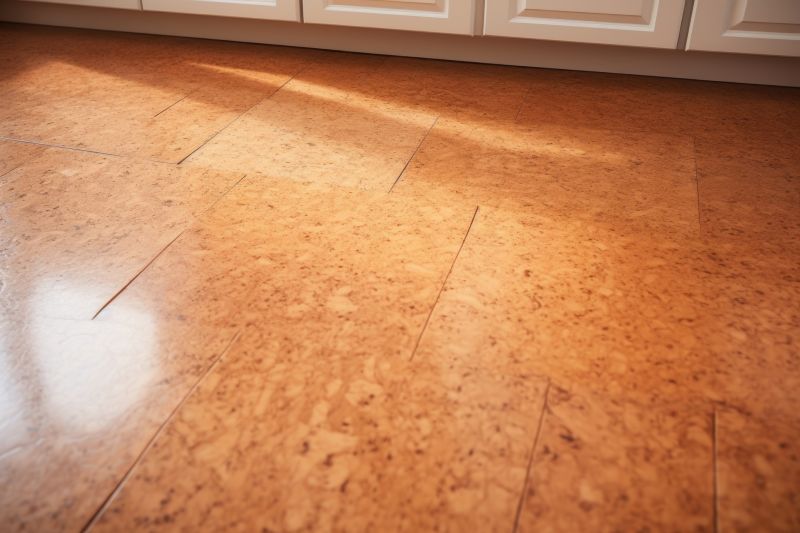Favorite Tools and Materials for Cork Flooring Installation Projects
Get insights into the must-have products that simplify installation and enhance the durability of your cork flooring.
 Installing cork flooring requires a combination of suitable products that ensure durability, proper adhesion, and a smooth finish. The process typically involves preparing the subfloor, selecting the right adhesives or underlayments, and applying finishing products to achieve a polished look. High-quality installation products can help ensure that the cork flooring remains stable over time and maintains its aesthetic appeal. From primers and adhesives to underlayment and sealers, each product plays a vital role in the success of the installation.
Installing cork flooring requires a combination of suitable products that ensure durability, proper adhesion, and a smooth finish. The process typically involves preparing the subfloor, selecting the right adhesives or underlayments, and applying finishing products to achieve a polished look. High-quality installation products can help ensure that the cork flooring remains stable over time and maintains its aesthetic appeal. From primers and adhesives to underlayment and sealers, each product plays a vital role in the success of the installation.
Top Overall Option
Premium Cork Flooring Adhesive
A versatile, high-performance adhesive designed specifically for cork flooring installations. It offers strong bonding properties, easy application, and compatibility with various subfloor types, helping to ensure a secure and lasting attachment. This adhesive is formulated to minimize odor and VOC emissions, making it suitable for indoor environments. Proper selection and application of this adhesive can contribute to a professional finish and long-term durability.
Types of Products For Cork Flooring Installations
Cork Flooring Adhesive
Specialized glues designed for securing cork tiles or planks to various subfloors, providing strong adhesion and flexibility.
Underlayment Sheets
Cork or foam underlayment options that provide cushioning, soundproofing, and moisture barrier properties.
Primers and Bonding Agents
Preparatory coatings that improve adhesion between the subfloor and cork flooring, reducing the risk of lifting or shifting.
Sealers and Topcoats
Protective finishes that seal the cork surface, enhancing resistance to moisture, stains, and wear.
Moisture Barriers
Materials designed to prevent moisture transmission from the subfloor to the cork, crucial in damp environments.
Transition Strips
Profiles that facilitate smooth transitions between cork flooring and other flooring types or room areas.
Floor Leveling Compounds
Self-leveling compounds used to create a flat, even subfloor surface prior to installation.
Edge Sealants
Products applied along the edges of cork flooring to prevent water ingress and damage.
Cleaning and Maintenance Products
Specialized cleaners and conditioners to maintain the appearance and longevity of cork floors.
Acoustic Underlayments
Materials that help reduce sound transmission through cork floors, improving room acoustics.
Expansion Joints
Components that accommodate natural expansion and contraction of cork flooring, preventing buckling.
Adhesive Removers
Products designed to clean excess adhesive from surfaces without damaging the cork.
Edge Trims and Profiles
Decorative and functional trims that provide a finished look at room edges and transitions.
Soundproofing Mats
Underlayments that help dampen noise and improve comfort underfoot.
Popular Choices
Widely used for securing cork tiles or planks, offering reliable bonding performance.
Commonly selected underlayment options for added cushioning and sound absorption.
Frequently chosen sealers to protect cork surfaces from moisture and stains.
Popular primers that enhance adhesion on various subfloor types before installation.
Trending profiles that provide a seamless transition between different flooring materials.
Commonly used in areas prone to humidity to prevent moisture damage.
Popular cleaners designed specifically for maintaining cork floors.
Frequently selected to enhance the durability of cork edges against water ingress.
Popular for improving acoustic comfort in residential and commercial spaces.
Often used to prepare uneven subfloors for a smooth cork installation.
Commonly used to clean excess adhesive during installation or renovation.
Popular profiles that finish edges neatly and protect against damage.
Choosing the appropriate products depends on several factors including the type of cork flooring, the subfloor material, and the specific conditions of the installation environment. Proper surface preparation with suitable primers can improve adhesion, while the right adhesive ensures a strong bond without damaging the cork. Additionally, underlayments can provide cushioning and sound insulation, enhancing the comfort and acoustic properties of the finished floor.
Applying sealers and topcoats after installation can protect the cork from moisture, wear, and staining, extending its lifespan. It's important to select products that are compatible with cork and suitable for the intended use of the space. Properly selected and applied installation products can help achieve a professional-looking finish and maintain the natural beauty of cork flooring over time.
Overall, investing in high-quality installation products tailored for cork flooring can contribute to a smoother installation process and a more durable, attractive floor. Careful consideration of each product type and its role in the installation process can make a significant difference in the final outcome, ensuring that the cork flooring remains functional and visually appealing for years to come.
Key Buying Considerations
- Compatibility with cork flooring type and subfloor material
- Adhesive strength and flexibility to accommodate movement
- Ease of application and drying time
- VOC emissions and odor levels for indoor air quality
- Moisture resistance properties, especially in humid areas
- Compatibility of primers and sealers with cork surfaces
- Soundproofing and cushioning qualities of underlayments
- Durability and resistance to wear and staining
- Ease of cleaning and maintenance after installation
- Expansion joint requirements to prevent buckling
- Edge protection and sealing options for water resistance
- Availability of transition profiles for seamless flooring edges
- Cost and availability of the products
- Environmental conditions of the installation area
- Reputation and reviews of the product or brand
